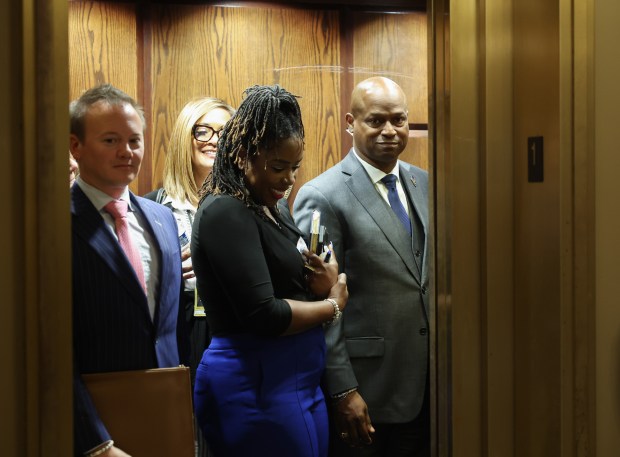On Jan. 25, Turkey at last approved membership for Sweden in NATO, the North Atlantic Treaty Organization. This is a historic step in several important respects.
Russia’s invasion of Ukraine in February 2022, and the resulting bloody war, have provided incentive for previously neutral Finland and Sweden to join this alliance. Ankara’s strong objections to Sweden, related to providing a haven for Turkish extremists, were finally overcome.
In July, President Joe Biden attended the NATO summit in Vilnius, Lithuania. The last stop on the itinerary was new NATO member Finland. In World War II, Finland’s military fought much larger Soviet forces to a draw.
NATO is a remarkably durable alliance. Nations led by the United States and Britain signed the NATO treaty in Washington D.C. in April 1949. By contrast, alliances lasted on average only five years during the long Napoleonic wars of two centuries ago.
Our present alliance began in direct response to Soviet expansionism during and after World War II. By 1949, the Cold War was on. Today, the organization pursues various diverse missions, including humanitarian relief.
The collapse of East Europe communist regimes, followed by the Soviet Union, ended the Cold War but not conflict in Europe. In 2008, Russian troops invaded a portion of Georgia, following an attack by Georgian troops on South Ossetia. Russia encouraged and fostered these breakaway efforts. In 2014, Russia intervened in eastern Ukraine and annexed the territory of Crimea.
The conclusion of the Cold War was a great victory for the policy of restrained deterrence termed “Containment.” Every United States president from Harry Truman, when the Cold War commenced, to George H.W. Bush when that conflict ended, supported this foundational security policy.
NATO has endured for various reasons. Bureaucracies seek self-perpetuation, and modern militaries represent potent political lobbies. However, the strategic realities of a now dangerously aggressive, expansionist Russia under President Vladimir Putin is the most important incentive and has reenergized the alliance.
Putin continually probes for ways to separate allies from the U.S. Also present is the danger of renewed violence among ethnic groups in southeastern Europe.
NATO today has a range of missions, including but going beyond self-defense narrowly defined. Forces have operated well beyond the North Atlantic region, including notably in Afghanistan. Humanitarian work has included transport and other support missions during the COVID-19 pandemic.
This in turn opens the door to a range of positive and productive activities beyond traditional military defense and security. With further expansion of economic development in Eastern Europe, the Middle East, North Africa and more widely, demand for better education, health care and related humanitarian activities also will grow.
This could lead to further development of the alliance’s capacities and involvement beyond purely military dimensions.
Article 5 of the NATO treaty states that an attack on one member nation is an attack on all. The 9/11 terrorist strikes on New York and Washington D.C., and in the skies over Pennsylvania, triggered this clause, for the first time.
After the final defeat of Napoleon, Britain spearheaded cooperation among Europe’s nations to keep the peace. This encouraged stability on the continent for a century. Today, NATO performs roughly the same strategic role,
Britain’s sustained support for NATO, and special rapport with the United States, provide interesting leadership opportunities. This could counterbalance the political acrimony resulting from the nation’s departure from the European Union. Britain’s intelligence and military experience and capabilities are durable and effective.
Learn More: Henry A. Kissinger, “The Troubled Partnership” and other books.
Arthur I. Cyr is the author of “After the Cold War” (Palgrave/Macmillan and NYU Press). Contact acyr@carthage.edu




